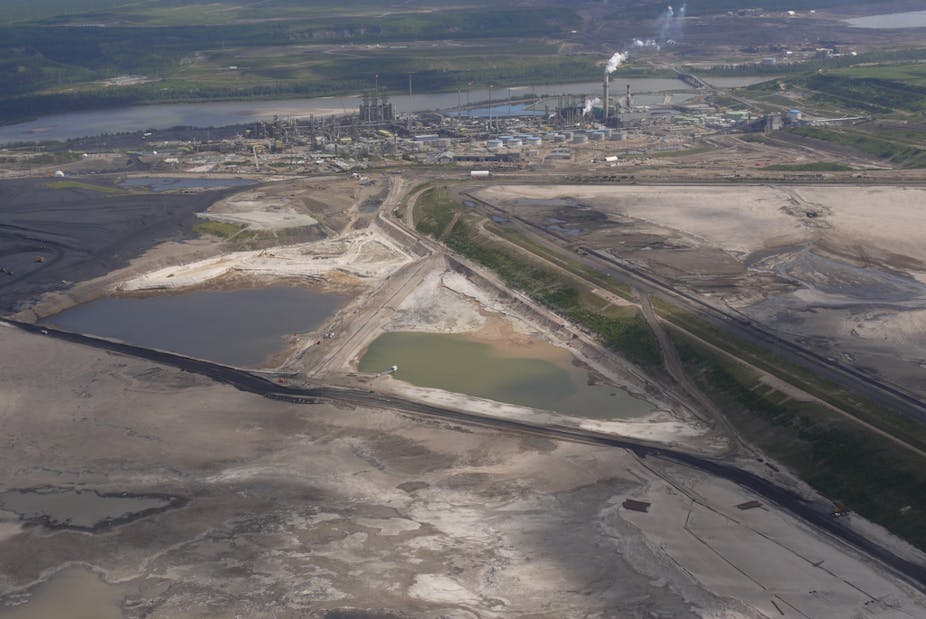In his recent Quarterly Essay, Man-made world: choosing between progress and planet, economist Andrew Charlton presents technological innovation as the solution to climate change and the route to unbounded economic growth.
He argues that technology will allow existing resources to meet future energy demands with lower CO₂ emissions. But he ignores the material realities of our energy resources.
Although noting technology “often arrives unpredictably, after hundreds of failures, decades of wasted effort and mountains of lost treasure”, Charlton nevertheless assumes we can rely on innovation “to break through the planetary constraints on our progress”. As Jared Diamond has demonstrated, not all civilisations got so lucky.
Charlton calls for yet more energy research, but ignores the enormous efforts already made. Take the billions spent over decades researching nuclear fusion. Energy breakthroughs are hard won. Commercial fusion reactors were just a few decades away in the 1970s. Now the running joke is they are still forty years away … and always will be. We cannot rely on technological solutions arriving just-in-time.
Physical limits
Charlton misleadingly uses the famous wager between Julian Simon and Paul Ehrlich to dismiss concerns over resource constraints. Ehrlich lost his 1980 bet that over ten years five common metals would increase in price, but he was not wrong about the long-term trends in declining ore grades and increasing costs of extraction. To borrow a phrase from energy economist Ferdinand Banks, the wager was a case of “quantifiable nonsense being rated far above non-quantifiable plausibility”.
The conventional explanation for Ehrlich’s loss is that is technological innovation will always extend resources and reduce prices through efficiency gains and substitution. There are three problems with this: firstly, Jevons’s paradox: in practice, increased efficiency leads to increased consumption; second, efficiency gains are rapidly absorbed through economic growth; finally, substitution is not always possible.
For fossil energy resources there is a further constraint: they can never be fully exploited. When we reach the point where the energy input required exceeds the energy obtained from extracting and refining them - that is, when the ratio of energy returned on the energy invested (EROI) is less than or equal to 1:1 - we have struck a thermodynamic limit, and gain no return from our efforts.
Extending that concept to industrial societies it is estimated that for their oil-based transportation systems to function, a minimum EROI of 3:1 is required. The EROI for US crude oil production has declined from 100:1 in the 1930s to about 17:1 today. Corn ethanol could never substitute for oil since its EROI is very close to 1:1.
The available energy supply – sunshine hours, silos of wheat, or barrels of oil – and the energy cost of obtaining it, are fundamental physical constraints setting limits to human activity.
The oil plateau
It is easy to take false comfort from the size of oil stocks while ignoring their capacity to deliver. Extracting and processing tar sands and oil shales requires much more energy than conventional oil and massive quantities of water. EROI for tar sand is only about 5:1, and for most shales, 1.5:1 – 4:1.
According to the International Energy Agency (IEA), conventional oil production peaked in 2006. Oil discoveries peaked in the 1960s. Declining conventional production is being compensated for by non-conventional oil: expensive tar sand and deep-sea wells. Today, we consume about three barrels for every new barrel found.
The IEA’s chief economist stated that “in order to stay where we are in terms of production levels … we have to find and develop four new Saudi Arabias.” Oil supply and demand dynamics are complex, but it is certain that “the age of cheap oil is over” and there is an emerging consensus that world oil production will plateau within a few decades.
Charlton remains unconcerned because he believes technology will increase the amount of oil that can be extracted from existing reserves. However, the last 30 years of technological development saw a mere 3% improvement in recovery rates. Ultimately it is the physics of oil fields that determine their production rates, not price signals.
Economic constraints
Economic output is directly linked to energy consumption. It has been calculated that global economic production consumes energy resources at a constant rate of almost 10 milliwatts per inflation-adjusted 1990 US dollar. Thus sustained economic growth requires increasing energy consumption ad infinitum. Unlimited economic growth on our finite planet is simply impossible.
The cost of energy as a percentage of GDP is an important indicator for industrial societies. Broaching a threshold value – estimated between 8% and 10% – leads to economic instability. The cost of oil is especially important since oil-dependent technologies underpin all modern transportation, cancelling out geography and enabling extensive just-in-time global supply-chains.
High oil prices may force their reconfiguration. For example, increased transportation costs from oil’s 2005 - 2008 price hike equated to a 9% tariff on international trade. It effectively wiped out decades of trade negotiations. Some US multinationals contemplated bringing off-shored manufacturing home.
Doing the math on “clean coal”
Charlton regards carbon capture and storage as one possible technological solution to increasing energy supply while reducing CO₂emissions. He complains that Green campaigners “haven’t done the maths” on renewables, but neither has he on “clean coal”. Others have.
To sequester one-third of the CO₂emitted from the world’s coal-fired power stations in 2010 would have meant burying a volume of the compressed gas exceeding by 70% the total global crude oil production for that year. The scale of the required infrastructure would be vast.
Furthermore, an MIT study shows this technological fix reduces the generating efficiency of power plants by some 27–36%. This increases both coal consumption and the volume of CO₂ to be sequestered. “Doing the maths” suggests clean coal is a most unlikely contender for significantly reducing greenhouse gas emissions.
Icarus fell
By privileging economics and technology, and ignoring physics and thermodynamics, Charlton is seduced by our apparent mastery of nature. Like Icarus, we ignore the constraints of material reality at our peril.

